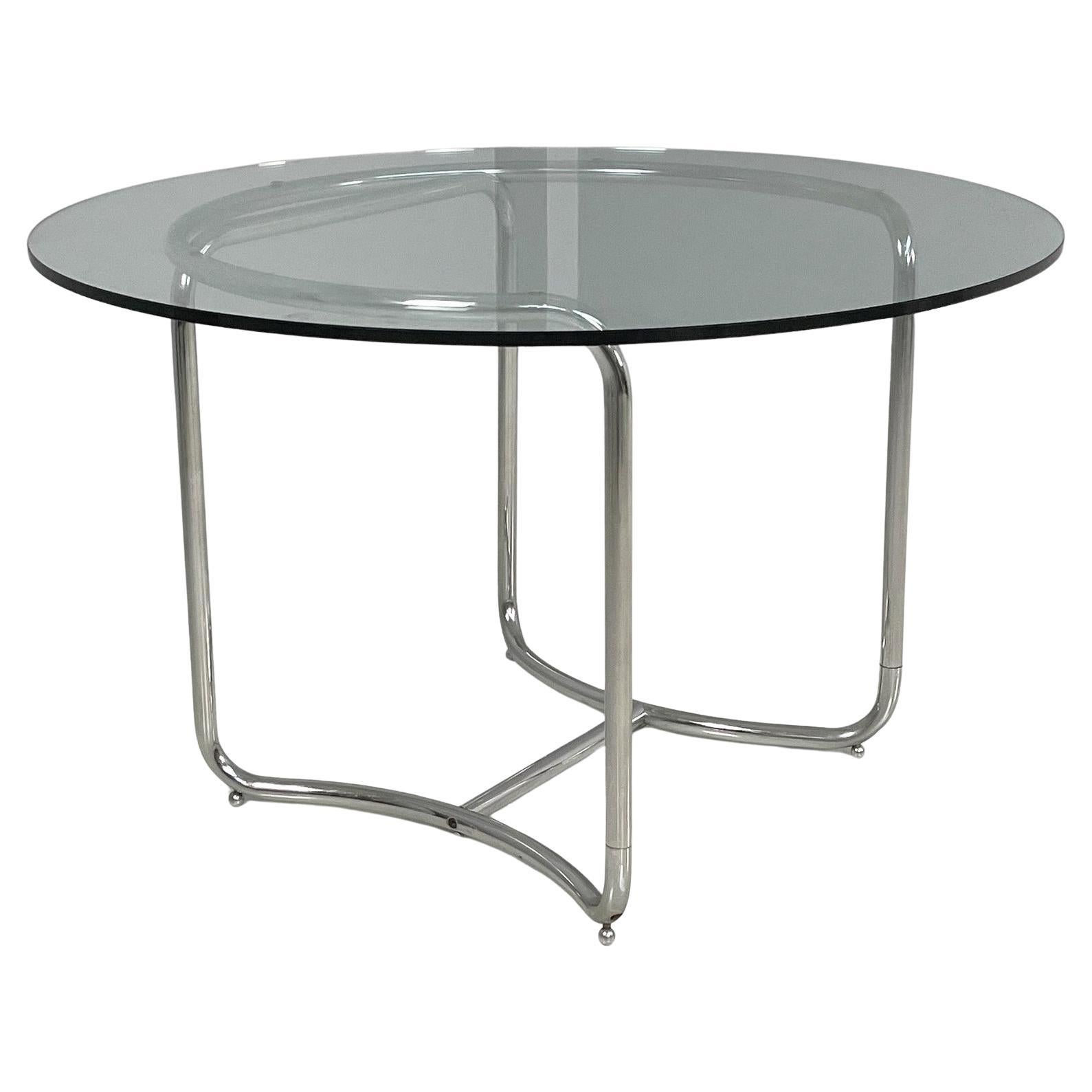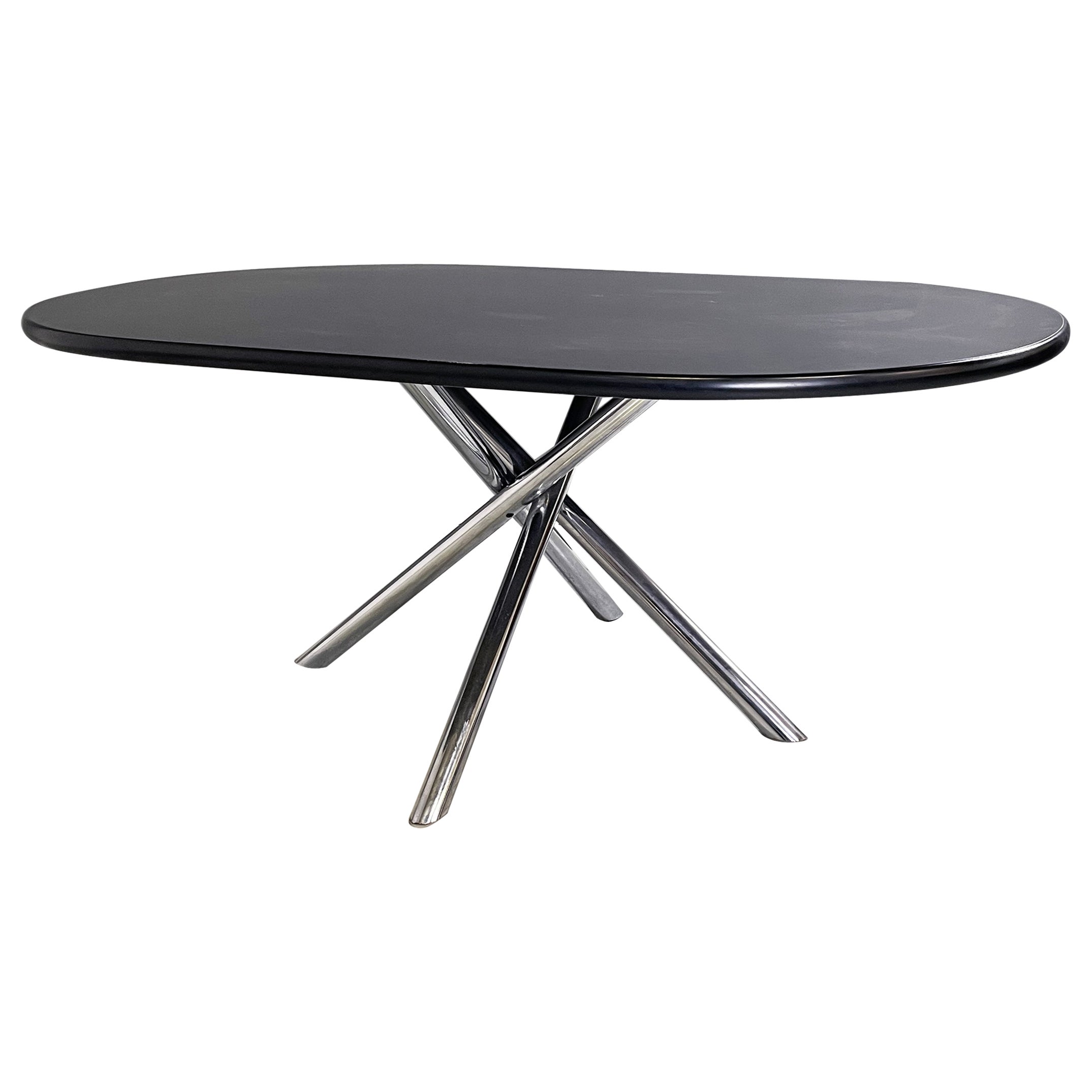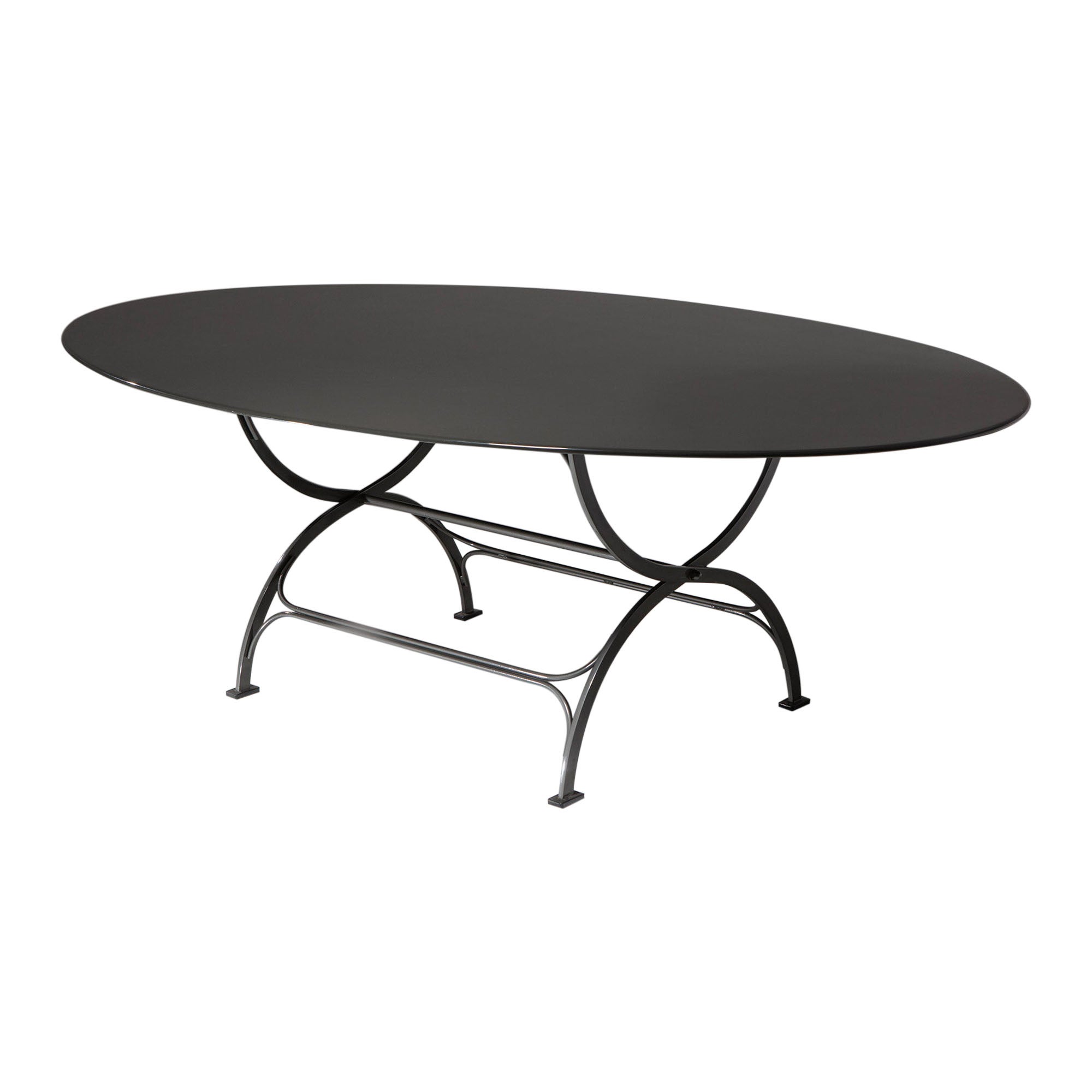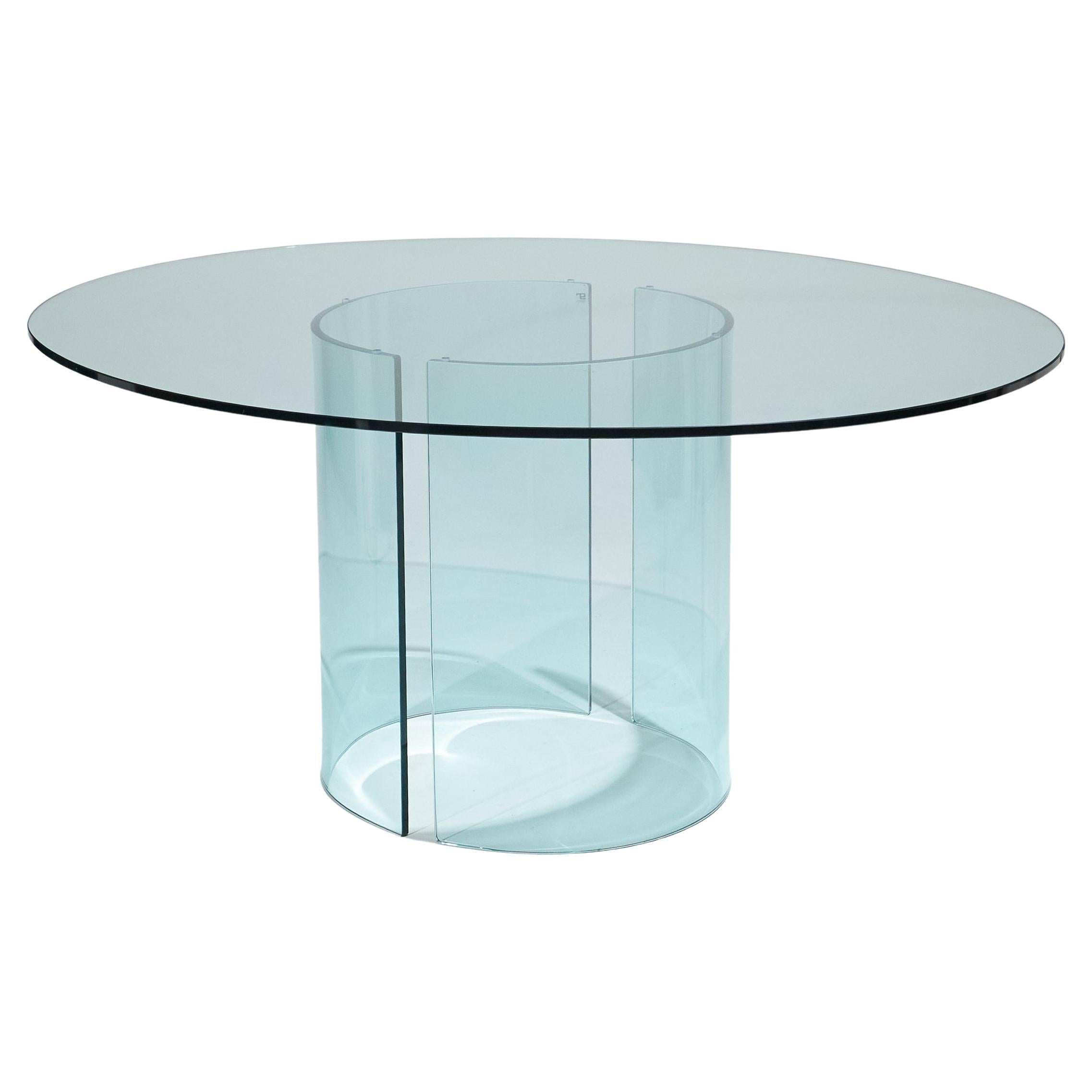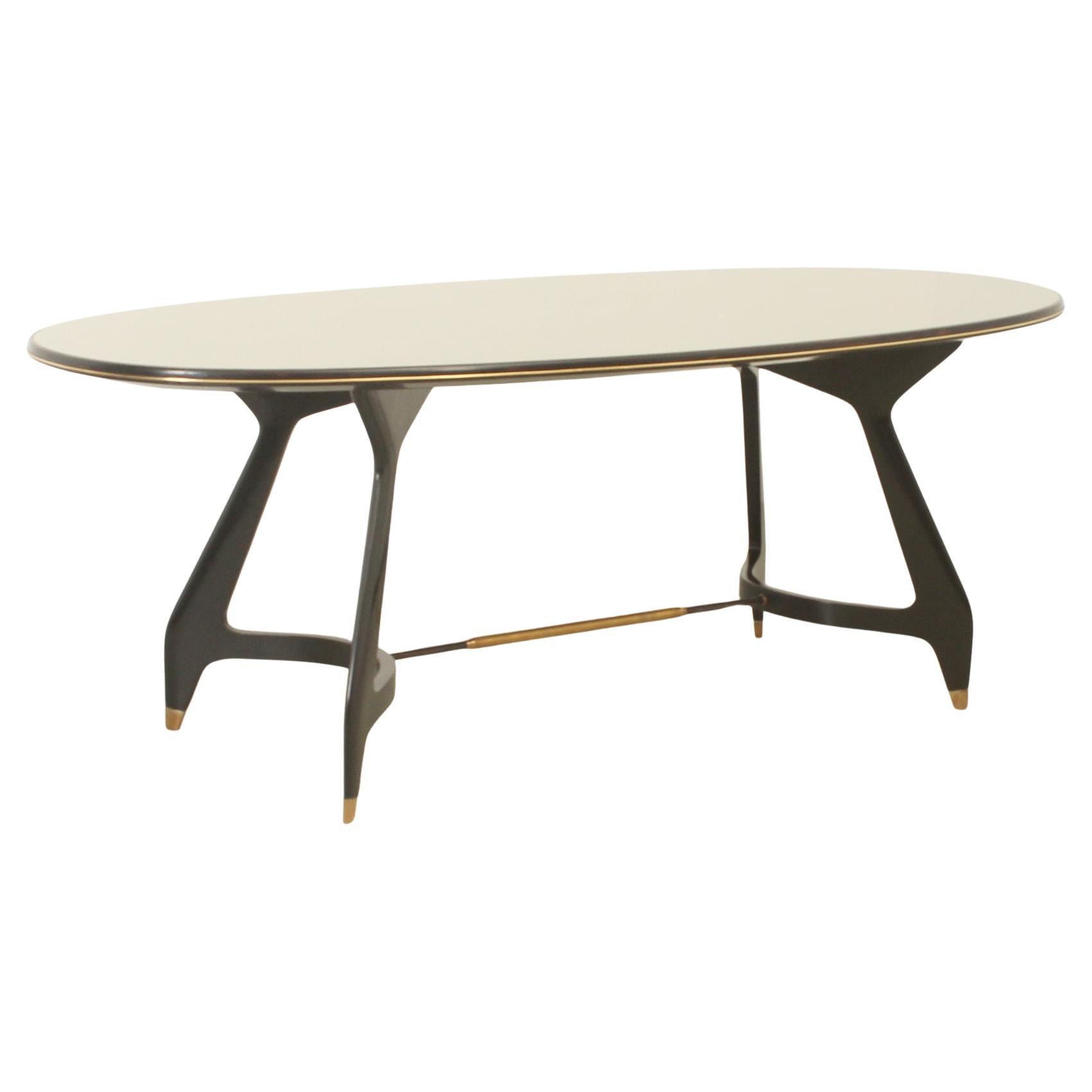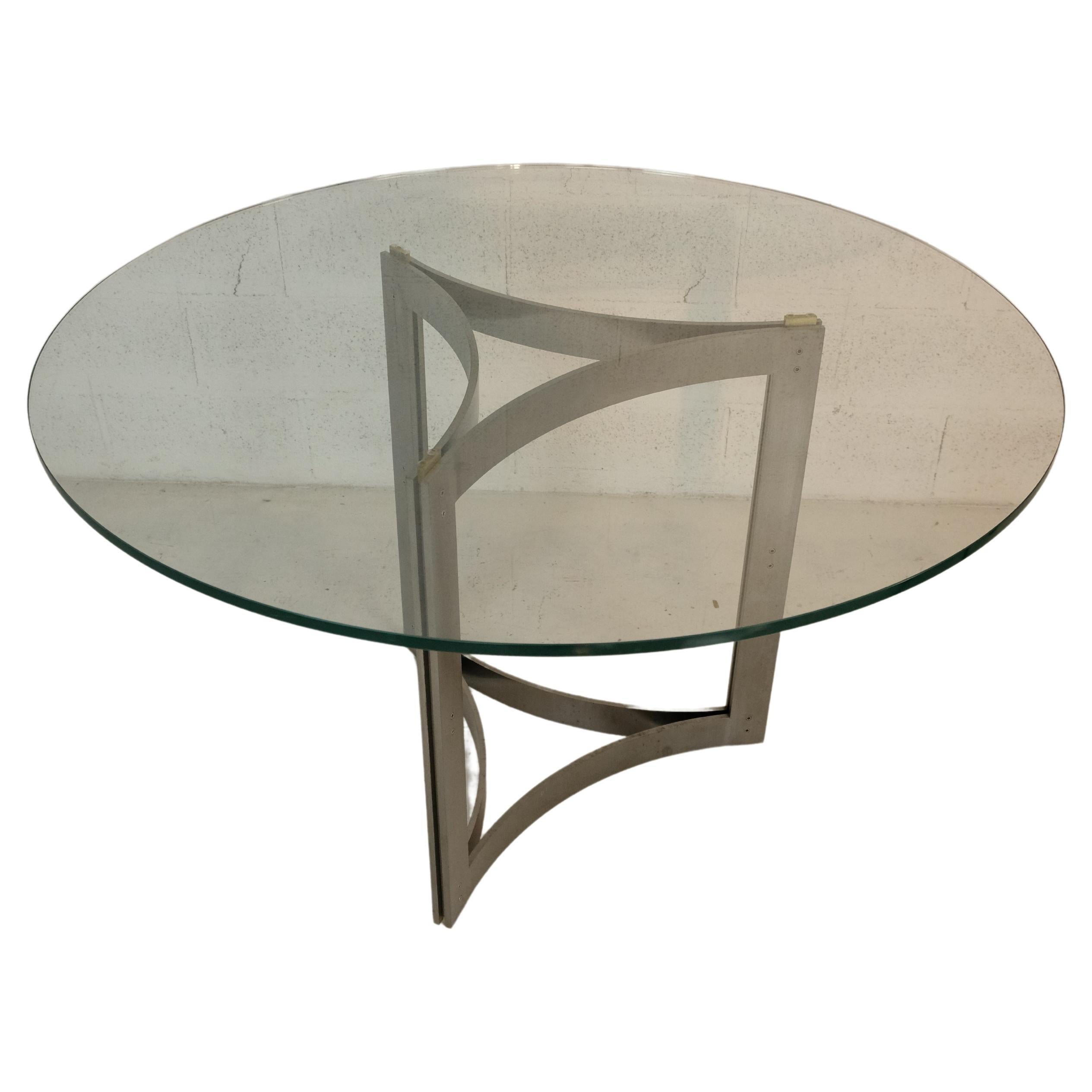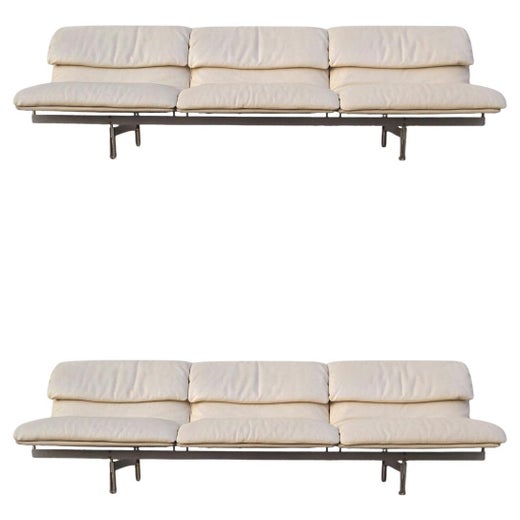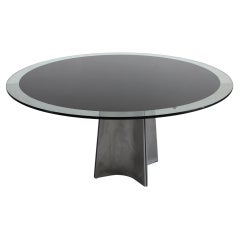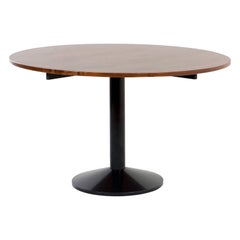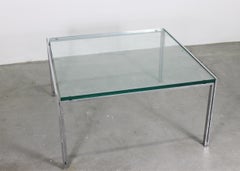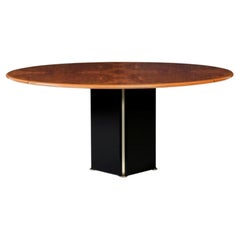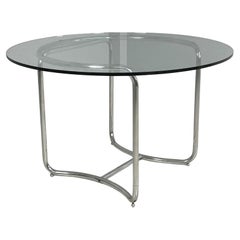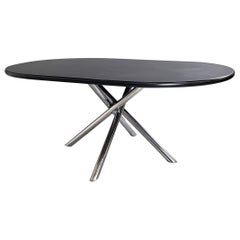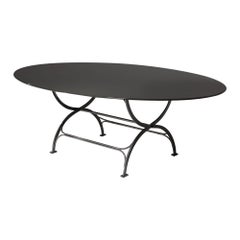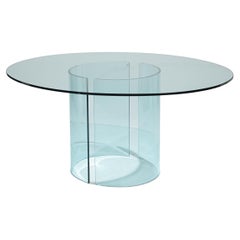Vittorio Introini Oval Shaped Dining Table in Steel ang Glass by Saporiti 1970s
About the Item
- Creator:Vittorio Introini (Designer),Saporiti (Manufacturer)
- Dimensions:Height: 28.75 in (73 cm)Width: 82.68 in (210 cm)Depth: 47.25 in (120 cm)
- Style:Post-Modern (Of the Period)
- Materials and Techniques:
- Place of Origin:
- Period:
- Date of Manufacture:1970s
- Condition:Wear consistent with age and use.
- Seller Location:Montecatini Terme, IT
- Reference Number:1stDibs: LU5304231111102
Saporiti
Established initially as Fratelli Saporiti in 1950, mid-century Italian furniture maker Saporiti Italia has a reputation for avant-garde and enduring designs, and its tables, chairs and cabinets inspire all who have had the pleasure of contemplating them.
Furniture designer Sergio Saporiti founded Fratelli Saporiti with a vision of creating pieces ahead of their time. By staying on top of the cultural shifts taking shape during the postwar era — and finding inspiration in the craftsmanship, durability and sensibility of Scandinavian design — Saporiti was able to tap into what the public wanted. His focus on using high-quality materials ensured that every welcoming chair and table could be used and enjoyed for decades to come.
In 1965, Saporiti collaborated with Italian designer Alberto Rosselli, a pioneer of the industrial design movement. They created such iconic pieces as the Confidential sofa, the Moby Dick chaise lounge and the Jumbo chair. In the 1970s, Saporiti initiated another collaboration with Italian designer Giovanni Offredi. The prolific partnership resulted in universally renowned designs like the Paracarro table and the Sail chair. Together, they also created the curving Wave sofa, which was popular in international markets.
The joint projects were a success, and the brand opened many international showrooms throughout the 1970s. This era also led to a partnership with Missoni — the celebrated Italian fashion brand worked closely with Giorgio Saporiti to create rugs and fabrics for its range of seating and more, and later, in 1983, Missoni expanded into home furnishings. At this time, the company officially rebranded as Saporiti Italia and released a line of customizable furniture, including the Avedon sofa, in collaboration with designer Mauro Lipparini.
Since then, Saporiti Italia has pivoted to furniture contracting and design management. To this day, the company remains under the ownership of the Saporiti family, and vintage Saporiti furniture continues to capture the imagination of collectors worldwide.
Find Saporiti Italia lounge chairs, coffee tables and sofas on 1stDibs.
- ShippingRetrieving quote...Shipping from: Borgo a Buggiano, Italy
- Return Policy
More From This Seller
View AllVintage 1970s French Mid-Century Modern Pedestals
Iron, Steel
Vintage 1950s Italian Mid-Century Modern Tables
Metal
Vintage 1970s Italian Post-Modern Center Tables
Steel
Vintage 1970s Italian Post-Modern Tables
Brass
Vintage 1950s Italian Mid-Century Modern Coffee and Cocktail Tables
Crystal, Brass
Vintage 1950s Italian Mid-Century Modern Dining Room Tables
Metal, Brass
You May Also Like
Vintage 1970s Italian Modern Dining Room Tables
Metal
Vintage 1970s Italian Modern Dining Room Tables
Metal
Vintage 1960s Italian Tables
Metal
Late 20th Century Dining Room Tables
Metal
Vintage 1950s Italian Mid-Century Modern Dining Room Tables
Glass, Maple
Vintage 1970s Italian Mid-Century Modern Dining Room Tables
Metal
